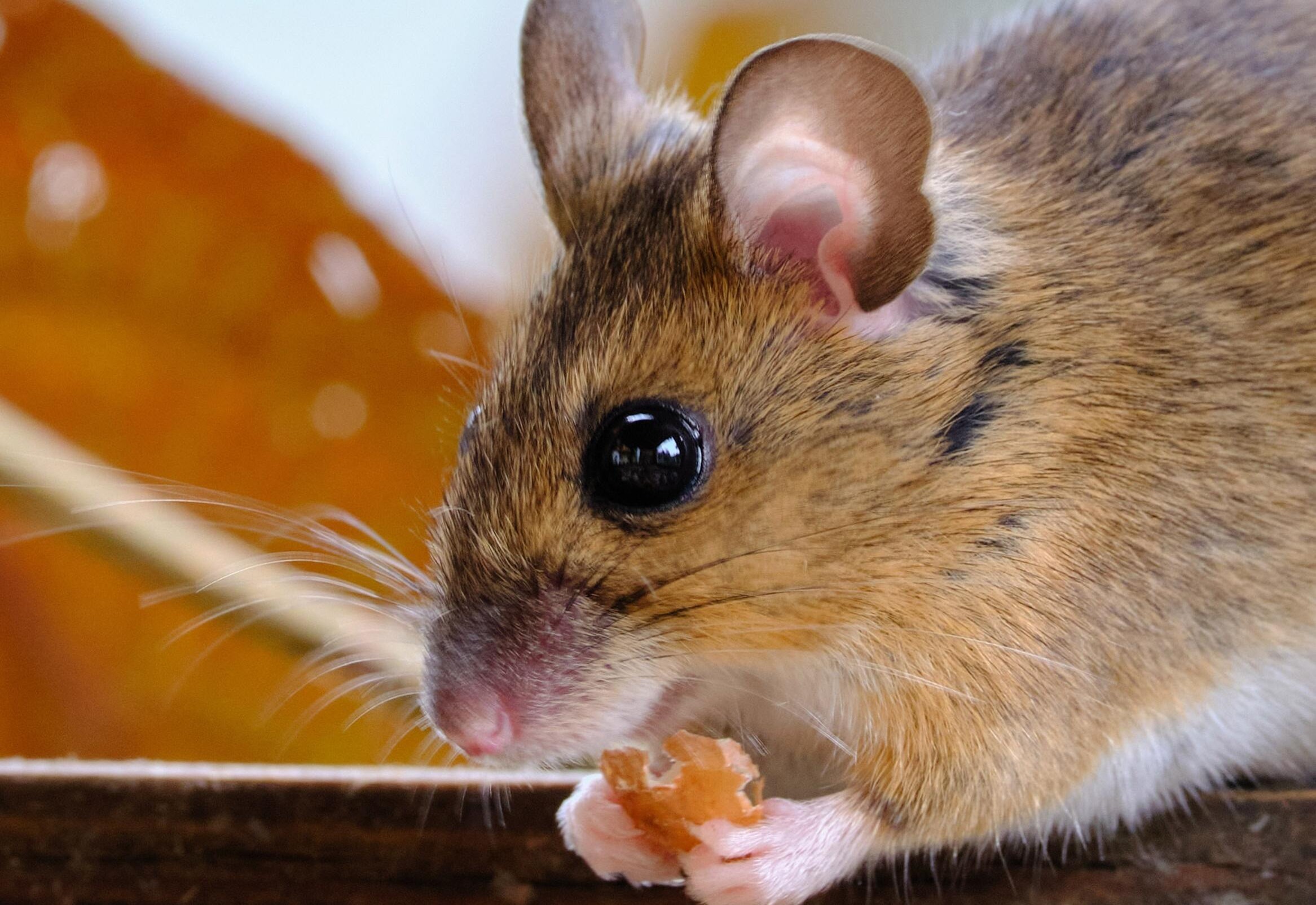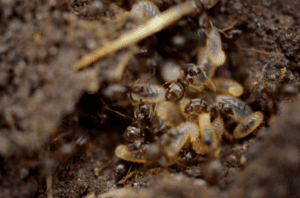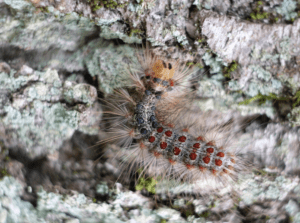
Mice are a tough adversary; once one mouse finds its way onto your property, many more soon follow. Because of the dangers mice pose, it is important to avoid infestations at all costs. This all-inclusive guide to mouse infestations will help you ensure a mouse-free property, even during rodent season.
Types of Mice in the US
Of the more than 1,000 species of mice, there are three that most often infest homes and businesses. The first of these three is the house mouse. House mice are the most commonly encountered species in the U.S. as they prefer to live in and around human structures. Their bodies are typically between 2 ½ and 3 ¾ inches long, and their tails are 2 ¾ to 4 inches long. Their hair is short and either gray or brown, and their underbellies are cream-colored. Their tails are scaly and single-colored.
Slightly larger than house mice are deer mice. They typically grow to be between 2 ¾ and 4 inches long, and their tails are around 2 to 5 inches. Deer mice have brownish-reddish fur, and their underbellies and feet are white. Their tails are hairy and bicolored. Deer mice are the main carriers of Hantavirus, which can be fatal.
The third of the most common species is the white-footed mouse, which is particularly prevalent in New Jersey. Their bodies are generally between 3 and 4 inches in length, and their tails range from 2 ½ to 3 ¾ inches. They are reddish-brown or gray in color. Their underbellies and feet are white.
Where Do Mice Come From?
Mice are originally from the lands that make up present-day Southeast Asia and India, but the mice on your property probably came from a nearby field, forest or pasture. Outdoors, mice like to hide in shrubs, tall grass, and dense underbrush. They will use overgrown vegetation, utility wires, and even clothes lines as pathways to reach homes and businesses. Once there, they will use any opening they can find to get inside. Mice can squeeze through holes as small as ¼ inch wide, which is roughly the width of a pencil.
What Attracts Mice?
Food
One of the main reasons mice like to nest indoors is food. Mice try to build their nest no further than 25 to 50 feet away from a consistent food source. They are omnivores and will eat whatever they can find, but they prefer to eat foods that are high in fat, carbohydrates or protein. They are fond of seeds, nuts, fruits, fatty meats, and grains like cereal. They will scrounge through pantries, cabinets, garbage receptacles, animal feed stores, garden seed stores, and any other spaces that hold food.
Shelter and Warmth
Mouse infestations are more common in the winter because mice need a warm place to nest. Unlike other pests, they do not hibernate through the winter, nor do they die from the cold weather. They instead find a warmer place to nest than their outdoor burrows, often opting for homes and businesses. That's why winter pest control becomes crucial to address mouse infestations. Mice actively seek out buildings that are in use because such buildings often have active heating systems and appliances that give off heat.
Nesting Materials
Mice chew up any soft materials they find to build their nests. They are known for chewing up cardboard, paper products, cottons and linens, insulation, furniture stuffing, feathers, and all other soft materials they can get their hands on.
Clutter
Mice love cluttered areas. Clutter provides countless hiding spots and sheltered pathways that allow them to scurry to and from food sources. In addition, clutter often contains abundant nesting materials.
Other Mice
When a mouse finds a safe place to nest, it will mark the area with pheromones. The pheromones they use indicate to other mice that it is safe to move in. More mice subsequently arrive, causing infestations to develop very quickly. The smell of dead mice can also attract other mice, especially if food is scarce. Mice are opportunistic feeders and, if they need to, they will eat dead mice.
Signs of a Mouse Infestation
Droppings are often the first noticeable sign of mice. Mice leave them everywhere they go, and they can be found in kitchens, pantries, cabinets, drawers, attics, basements, and any other spaces that mice happen to pass through. Mouse droppings look like rod-shaped pellets that are pointed on each end. They are quite small, only measuring around ⅛ to ¼ inch long. Newer droppings are shiny and dark brown in color while older droppings have a chalky appearance.
Nests and shredded materials are also sure signs of mouse activity. Mice like to chew up soft materials like paper and fabric to build their nests. Their nests look like big, messy piles of shredded materials.
Other signs of mice include chew or scratch marks, grease marks, a musty odor, and noises like scratching, squeaking, or gnawing.
Dangers of a Mouse Infestation
Despite their meticulous grooming habits, mice are notoriously dirty pests. This is mainly due to the fact that they leave droppings, urine, and saliva everywhere, all of which spread bacteria and diseases. Mice are known to spread more than 35 different diseases including Hantavirus, salmonellosis, monkeypox, tularemia, leptospirosis, rat-bite fever, and more. Mice also tend to host parasites like fleas and ticks, both of which spread a number of diseases themselves.
What To Do if a Mouse Bites You?
Mice don’t usually bite or scratch, but they will if they feel threatened. If you are bitten or scratched by a mouse, immediately clean the wound with soap and warm water. If you have some, apply antibacterial ointment before dressing the bite with a bandage. Monitor for symptoms of rat-bite fever and hantavirus for at least 10 days. Symptoms of mouse bite-borne diseases typically show up within 3 to 10 days, but they can take up to 3 weeks to appear. If you have not had a tetanus shot within the last 10 years, or if you are not sure when your last tetanus shot was, get one within 72 hours of the bite or scratch.
Besides diseases, parasites and occasional bites, mice are dangerous because of the structural damage they cause. They will chew through just about anything they can, and in the process they contaminate food, chew holes through walls, ruin furniture and stored items, destroy insulation, and damage electrical wires. Chewed wires are a serious fire hazard. In fact, rodents are responsible for around 20% of the undetermined house and structure fires that occur each year in the U.S. Needless to say, mice are a very hazardous pest and infestations should be avoided if possible. Read on for tips to prevent mouse infestations.
How To Prevent Mice
In order to prevent mice, it is important to keep in mind what attracts them and take proactive measures. By understanding their preferences and behaviors, you can create an environment that is less appealing to mice. Implementing proper sanitation practices, sealing entry points, and removing potential food and water sources are essential steps in preventing pest infestations. Remember, in order to prevent pest infestations, it is important to be vigilant and address the factors that may attract mice in the first place.
- Eliminate food sources by storing all food in airtight containers made of a hard, non-chewable material like metal or hard plastic. Pet food, animal feed, and garden seeds should also be kept in such containers. In addition, keep tight-fitting lids on indoor and outdoor garbage receptacles and promptly clean up food spills.
- Eliminate entrances. Mice can enter through tiny cracks, but before doing so, they can use the openings to sense the indoor temperature of the building. If mice cannot find any cracks or openings, they cannot tell if the building is suitable for nesting, nor can they enter to build a nest. Take a walk around your home or business and seal up all openings you find with either steel wool or silicone-based caulk. Be sure to also replace broken siding and missing shingles, and place screens or covers over vents and chimneys.
- Eliminate nesting materials by properly storing items. Avoid using cardboard boxes for storage. Instead, opt for hard plastic or wooden storage containers.
- Minimize clutter both indoors and out. Indoors, keep storage and living areas as organized and mess-free as possible. Outdoors, remove debris piles and keep vegetation trimmed. If possible, keep firewood at least 5 to 10 feet away from the outside of the building.
- Consider a recurring pest control plan. Even when they are completely eliminated, mice often come back eventually, especially on properties that are prone to mouse infestations. The best way to avoid this is by receiving regularly scheduled preventative pest control treatments.
How To Treat A Mouse Infestation
Knowing how to prevent rats and mice is one thing. When you start seeing signs of mice, it is important to take action right away. If you have not already done so, the first step is to implement the previously listed prevention methods. Next, place deterrents in especially problematic areas. Some commonly used mouse deterrents are dryer sheets, peppermint oil, vinegar, and citronella. Cats are a major mouse deterrent, even if the cat is not a mouser. Mice have a strong sense of smell and will instinctively avoid areas where they smell a cat. Finally, call a pest control expert. Mice are a rather dangerous pest, so if these methods are not completely eliminating an infestation it is time to call in a pest control professional.
Twin-Boro Termite and Pest Control uses Integrated Pest Management, or IPM. IPM utilizes the most up-to-date scientific knowledge of pests like mice in order to completely eradicate them. What’s more, IPM is environmentally sound and minimally invasive, making it the safest form of pest removal. Our residential and commercial pest control plans are 100% guaranteed, which means that we will provide follow-up treatments as needed until your mouse problem is gone for good. Call us today to schedule your free inspection.






